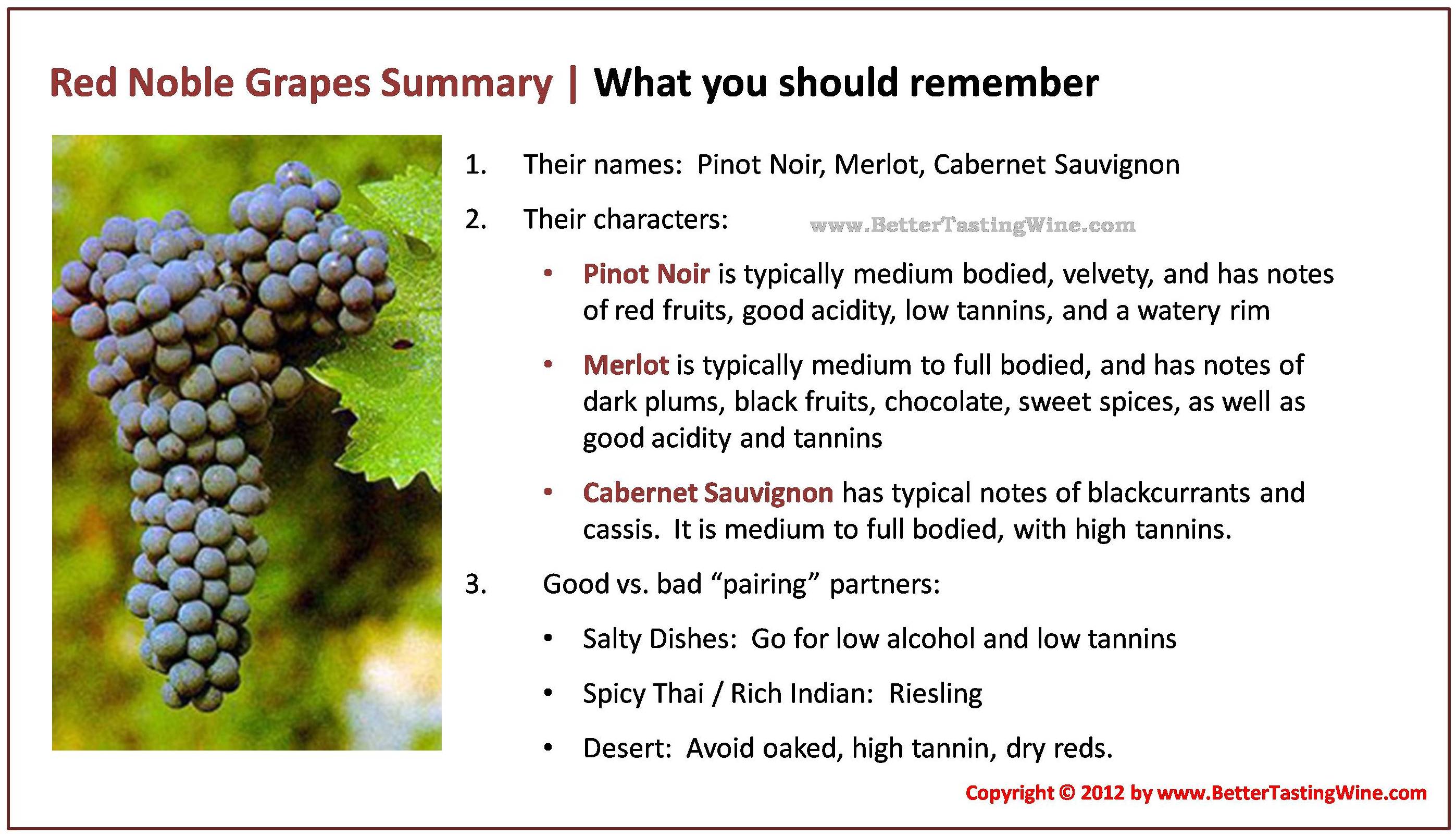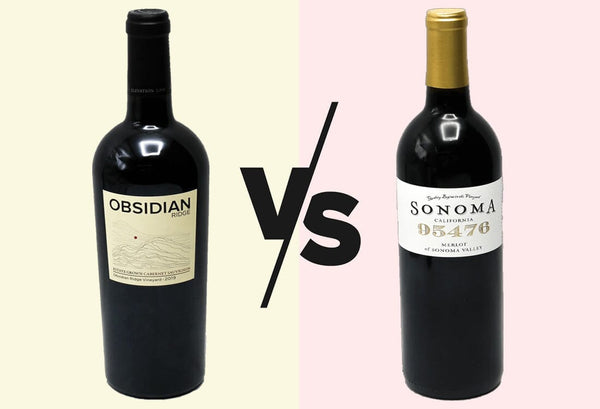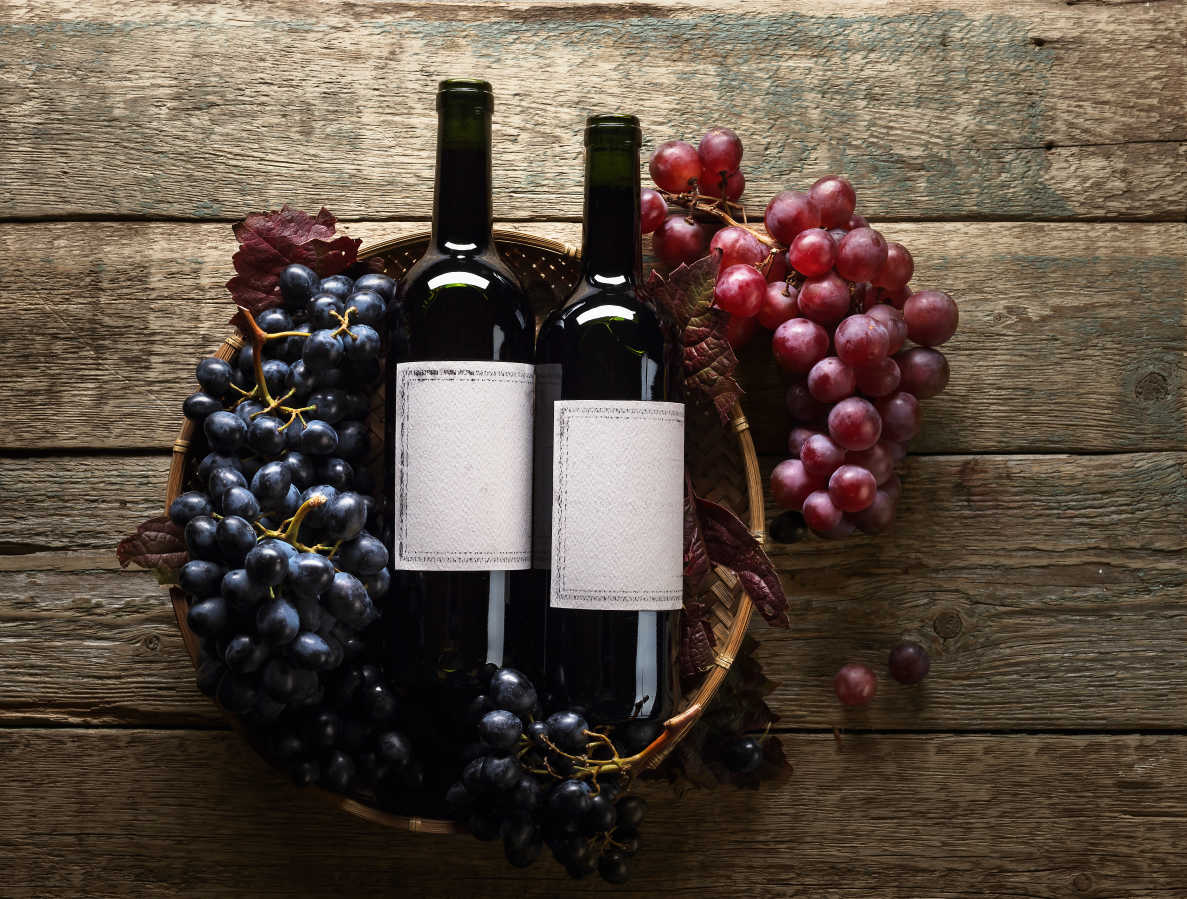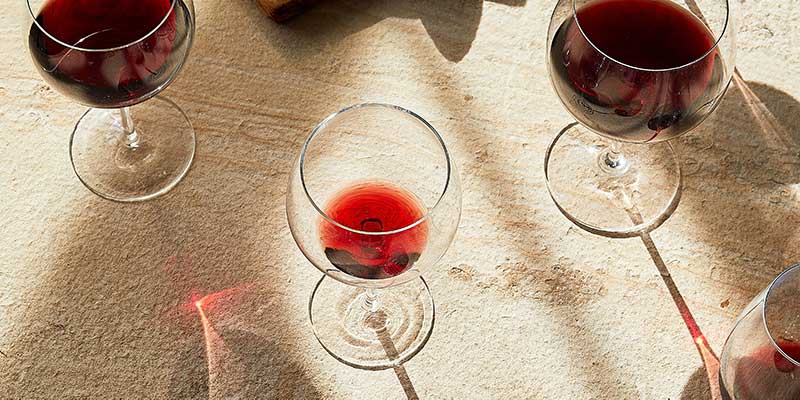Overview Of Cabernet Sauvignon And Merlot Varieties

Cabernet Sauvignon and Merlot are two popular red wine varieties that offer distinct flavors and characteristics. Cabernet Sauvignon is known for its bold, full-bodied nature, with flavors of blackcurrant, tobacco, and dark chocolate. It has high tannins and acidity, making it a great wine for aging. On the other hand, Merlot is softer and more approachable, with flavors of ripe fruits like plum and cherry. It has lower tannins and acidity, making it a versatile and enjoyable wine to drink. Both varieties have their own unique qualities, allowing wine enthusiasts to explore and appreciate the diversity of red wines.
Cabernet Sauvignon And Merlot: Origins And Characteristics
Cabernet Sauvignon and Merlot are both esteemed red wine varieties with unique origins and characteristics. Cabernet Sauvignon originated in the Bordeaux region of France and is now grown worldwide. It is known for its deep color, high tannins, and bold flavors of blackcurrant and dark chocolate. On the other hand, Merlot also hails from the Bordeaux region and is known for its softer, more approachable nature. It has lower tannins and exhibits flavors of ripe fruits like plum and cherry. Both these varieties have their own distinct characteristics that make them beloved choices for wine enthusiasts worldwide.
Differences In Flavor Profiles And Aging Potential
Cabernet Sauvignon and Merlot exhibit distinct flavor profiles and aging potentials. Cabernet Sauvignon is known for its bold flavors of blackcurrant and dark chocolate, along with high tannins that give it structure and aging potential. Merlot, on the other hand, offers a softer and more approachable profile with flavors of ripe fruits like plum and cherry. It has lower tannins and is generally ready to drink at a younger age. Both wines can benefit from aging, but Cabernet Sauvignon often has a longer aging potential compared to Merlot.
Tasting Notes Comparison

When comparing the tasting notes of Cabernet Sauvignon and Merlot, distinct differences emerge.
Cabernet Sauvignon is known for its bold flavors of blackcurrant and dark chocolate, supported by high tannins that provide structure and ageability. On the other hand, Merlot offers a softer and more approachable profile, with notes of ripe plum and cherry. It has lower tannins and is generally ready to drink at a younger age. Cabernet Sauvignon showcases a fuller body and robust flavors, while Merlot exhibits a smoother and more fruit-forward character.
Cabernet Sauvignon Tasting Notes
Cabernet Sauvignon is characterized by its bold and robust flavors. It typically offers intense aromas of blackcurrant, dark cherry, and blackberry. On the palate, Cabernet Sauvignon displays a rich and full-bodied profile, with notes of dark chocolate, cedar, and tobacco. The wine’s high tannins provide a firm structure and contribute to its ageability. The finish is long and lingering, often accompanied by hints of vanilla and spice. Overall, Cabernet Sauvignon is known for its complexity, depth, and ability to pair well with rich and hearty dishes.
Merlot Tasting Notes
Merlot is known for its smooth and approachable taste. It offers aromas of ripe red fruits, such as plum, cherry, and raspberry, with subtle notes of vanilla and spice. On the palate, Merlot showcases flavors of blackberry, black cherry, and dark chocolate. It has a velvety texture and medium body, with softer tannins compared to Cabernet Sauvignon. The finish is often lingering and can have hints of tobacco or cedar. Overall, Merlot is a versatile and easy-drinking wine that pairs well with a variety of dishes.
Food Pairing

When it comes to pairing food with red wine varietals, Cabernet Sauvignon and Merlot offer distinct flavors that complement different dishes. Cabernet Sauvignon pairs beautifully with grilled steaks, roasted lamb, or aged cheddar cheese. Its bold tannins and rich flavors enhance the intensity of these hearty dishes. On the other hand, Merlot is a versatile wine that pairs well with roasted chicken, mushroom risotto, or soft cheeses like brie. The smooth and approachable nature of Merlot makes it a great choice for a wide range of dishes. Whether you’re enjoying a juicy steak or a creamy risotto, these red wines are sure to elevate your dining experience.
Best Food Pairings For Cabernet Sauvignon
Cabernet Sauvignon pairs beautifully with a variety of robust and hearty dishes. The bold tannins and rich flavors of Cabernet Sauvignon make it a perfect match for grilled steaks, roasted lamb, and dishes with rich, savory sauces. It also complements aged cheddar cheese, adding depth and complexity to the cheese’s flavors. The intensity of Cabernet Sauvignon can stand up to the bold flavors of these dishes, creating a harmonious balance of flavors on the palate. Whether you’re enjoying a juicy steak or a hearty cheese platter, Cabernet Sauvignon is sure to enhance your dining experience.
Ideal Dishes To Pair With Merlot
Merlot is a versatile and food-friendly wine that pairs well with a variety of dishes. Its medium-bodied and fruit-forward characteristics make it a great accompaniment to roasted chicken, grilled pork chops, or sautéed mushrooms. The smooth tannins of Merlot also make it an excellent choice for pairing with soft cheeses like brie or camembert. Additionally, Merlot’s slightly spicy and herbal notes can complement dishes with herbs like thyme or rosemary. Whether you’re enjoying a hearty meat dish or a cheese platter, Merlot is sure to enhance the flavors of your meal.
Production And Aging

Cabernet Sauvignon and Merlot have different production processes and aging techniques. Cabernet Sauvignon is known for its intense flavor and aging potential. The grapes are harvested at full ripeness and undergo a longer maceration period to extract color and tannins. The wine is then aged in oak barrels, which adds complexity and enhances the flavors. On the other hand, Merlot is generally produced in a more approachable style. It often undergoes shorter maceration and is aged in oak barrels or stainless steel tanks. These differences in production and aging contribute to the distinct characteristics of Cabernet Sauvignon and Merlot wines.
Cabernet Sauvignon: Production Processes And Aging Techniques
Cabernet Sauvignon undergoes a rigorous production process to achieve its exceptional flavor and aging potential. The grapes are harvested at full ripeness, and the maceration period is extended to extract the rich color and tannins. After fermentation, the wine is aged in oak barrels for 18 to 24 months, allowing it to develop complex flavors and aromas. The oak barrels also impart additional depth and structure to the wine. The longer aging process contributes to the wine’s ability to age gracefully, enhancing its flavors and smoothing out its tannins.
Merlot: Winemaking Methods And Aging Considerations
Merlot is produced through similar winemaking methods as Cabernet Sauvignon, but there are some notable differences. The grapes are harvested at their optimal ripeness and undergo fermentation, typically in stainless steel tanks. The maceration period is shorter compared to Cabernet Sauvignon, resulting in a lighter color and softer tannins. After fermentation, Merlot is aged in oak barrels for a shorter period, typically around 12 to 18 months. This allows the wine to develop complexity while preserving its fruity and velvety characteristics. Merlot is known for its approachability and is often enjoyed at a younger age compared to Cabernet Sauvignon.
Regional Variations

Regional Variations:
Cabernet Sauvignon and Merlot exhibit distinct characteristics based on the region in which they are grown. Cabernet Sauvignon is particularly renowned in Bordeaux, France, where it thrives in the gravelly soils of the Médoc region. Napa Valley in California is also celebrated for its Cabernet Sauvignon, known for its rich and ripe fruit flavors. Merlot, on the other hand, flourishes in regions such as Bordeaux’s Pomerol and Saint-Emilion, where it produces velvety and fruit-forward wines. Additionally, Merlot has gained popularity in regions like Chile and Washington State, producing wines with a unique expression of terroir. The regional variations further contribute to the diversity and complexity of both varietals.
Notable Regions For Cabernet Sauvignon Cultivation
Notable regions for Cabernet Sauvignon cultivation include Bordeaux, France and Napa Valley, California. In Bordeaux, Cabernet Sauvignon thrives in the gravelly soils of the Médoc region, producing wines with intense flavors and structured tannins. Napa Valley is renowned for its Cabernet Sauvignon, where the warm climate and diverse soils result in rich, ripe fruit flavors and a velvety texture. Other notable regions for Cabernet Sauvignon cultivation include Tuscany, Italy, where it is often blended with Sangiovese, and Coonawarra and Margaret River, Australia, known for producing elegant and age-worthy Cabernet Sauvignon wines.
Merlot: Popular Wine-growing Regions And Specific Characteristics
Merlot is grown in several popular wine-growing regions around the world, including Bordeaux, France, where it is often blended with Cabernet Sauvignon. In addition, Merlot is widely cultivated in regions such as Napa Valley, California, where it produces wines with velvety texture and flavors of black cherry and plum. Other notable regions for Merlot cultivation include Tuscany, Italy, where it is used in the production of Super Tuscan wines, and Chile, where it thrives in the cooler climate of the coastal regions. Merlot is known for its medium body, smooth tannins, and fruity characteristics.
Conclusion

In conclusion, the comparison between Cabernet Sauvignon and Merlot highlights their unique characteristics and qualities. Cabernet Sauvignon offers a bold and intense flavor profile, with notable aging potential, making it a preferred choice for those seeking a rich and robust wine. On the other hand, Merlot provides a softer and more approachable taste, characterized by fruit-forward notes. Ultimately, the preference between the two varieties depends on personal taste and the specific occasion or meal. Whether you choose the boldness of Cabernet Sauvignon or the smoothness of Merlot, both options guarantee a delightful wine-drinking experience.
Key Differences Between Cabernet Sauvignon And Merlot
Cabernet Sauvignon and Merlot may share some similarities, but they also have distinct differences that set them apart. Cabernet Sauvignon is known for its higher tannin levels, giving it a bold and intense flavor. It has a fuller body, deeper color, and a longer aging potential. On the other hand, Merlot is characterized by softer tannins, making it smoother and more approachable. It has a lighter and fruit-forward taste with a shorter aging potential. These differences make Cabernet Sauvignon ideal for those who prefer a robust wine, while Merlot appeals to those seeking a more mellow and easy-drinking experience.
Choosing The Right Red Wine For Your Preference
When it comes to choosing the right red wine for your preference, it ultimately comes down to personal taste. If you prefer a bold, robust wine with higher tannins and a longer aging potential, then Cabernet Sauvignon might be the perfect choice for you. On the other hand, if you prefer a smoother, fruit-forward wine that is more approachable, then Merlot might be more to your liking. Consider your own preferences, as well as the occasion and food pairing, to make an informed decision. Cheers!
FAQ About Cabernet Sauvignon Vs Merlot: Exploring Red Wine Varieties
Q: What is the main difference between Cabernet Sauvignon and Merlot?
A: The main difference lies in their taste profiles. Cabernet Sauvignon is known for its bold, intense flavors with higher tannins, while Merlot is softer, fruitier, and more approachable.
Q: Which wine pairs better with certain foods?
A: Cabernet Sauvignon pairs well with hearty, rich foods like steak and lamb due to its bold flavors. Merlot, on the other hand, complements poultry, pasta, and dishes with red sauces.
Q: Are there differences in aging potential between Cabernet Sauvignon and Merlot?
A: Yes, Cabernet Sauvignon generally has a higher aging potential due to its tannins and structure, making it a good candidate for cellaring. Merlot is typically meant to be enjoyed younger.
Q: Do Cabernet Sauvignon and Merlot come from the same region?
A: Both grapes originated in Bordeaux, France, but are now grown in various regions around the world. Cabernet Sauvignon is widely planted in regions like Napa Valley, California, while Merlot thrives in places like Pomerol and Saint-Émilion in France.
Q: What are the flavor profiles of Cabernet Sauvignon and Merlot?
A: Cabernet Sauvignon often features dark fruit flavors like blackcurrant and cassis, along with hints of herbs and spices. Merlot offers plum, cherry, and chocolate notes with a softer mouthfeel.
Q: Can Cabernet Sauvignon and Merlot be blended together?
A: Yes, Cabernet Sauvignon and Merlot are frequently blended together, creating Bordeaux-style blends that combine the best characteristics of each grape to produce complex and balanced wines.

A local, family-owned fast food and ice-cream diner in Wind Lake, Wisconsin. We might be small, but we are big on fast-friendly service with everything cooked to order. B-Lazy Diner offers chicken and fish fry buckets, served up with French fries and our famous homemade coleslaw and tarter sauce, along with a variety of wraps, seasoned burgers, homemade soups, and, of course, ice cream cones, sundaes, malts, and shakes.